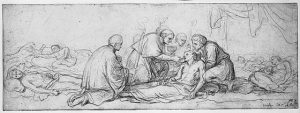
The double helix structure of Deoxyribose Nucleic Acid (DNA) was established in 1953, in a paper published by James Watson and Francis Crick, working at the Cavendish Laboratory at Cambridge University. In this post, I’ve provided a beginner’s guide to genetics, with a fairly simple outline of how the genetic code carried on DNA is translated into a human, or indeed any other living organism. Continue reading “What Watson and Crick Were On About: How the Genetic Code is Decoded”


